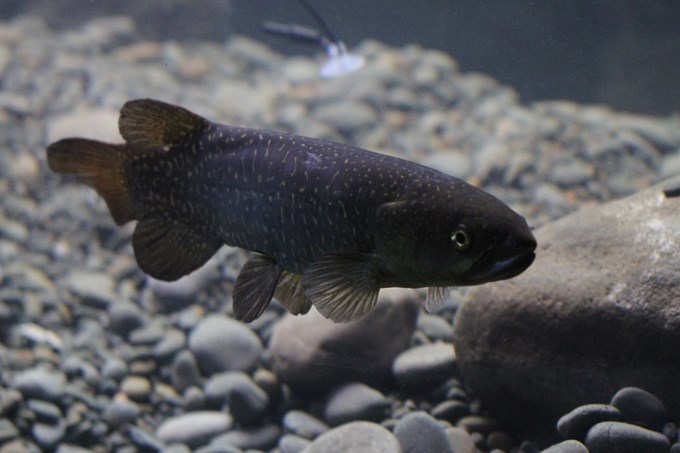Ten thousand giant kōkopu whitebait were welcomed into Tāwharanui Regional Park on Saturday 10 June – the largest reintroduction of whitebait in New Zealand to date.
The release aims to establish two self-sustaining giant kōkopu populations to support the national conservation of the rare, native species.
Why is protecting our native fish important?
Councillor Penny Hulse, Chair of Auckland Council’s Environment and Community Committee, says protecting our native fish is important because they maintain healthy aquatic ecosystems.
“A diverse and thriving aquatic environment is important for supporting a rich natural array of plants and animals, many of which are found nowhere else in the world,” she says.
Giant kōkopu is one of only five whitebait species in Auckland and if they continue to decline at their current rate, they will be at risk of extinction in the wild.
Populations disappearing
Fish surveys undertaken by the council found giant kōkopu were no longer present in Tāwharanui Regional Park or numerous other sites across the region.
Auckland Council Senior Ranger Open Sanctuaries Matt Maitland says this is likely to have been a result of habitat loss, water quality decline and land-use changes.
Working to make waterways habitable again
Work undertaken at Tāwharanui by parks staff, volunteers and community partner Tāwharanui Open Sanctuary Society (TOSSI), along with technical support and equipment from NIWA, has helped to restore the park’s waterways enabling the return of the whitebait.
This work to improve conditions in Tāwharanui’s streams and wetlands has included reducing water use for the farm and nursery and water losses through leaky infrastructure, restoring wetlands and creating a passage through the pest-proof fence to allow fish out but stops pests coming in.
By offering a predator-free environment, giant kōkopu, which can reach up to 600mm in length and 2.7kg, will have a better chance of survival.
Look but don't touch
Aucklanders play an important role in the conservation of whitebait at Tāwharanui Regional Park and are advised to look but not touch.
The release coincided with the dawn launch of Matariki Festival 2017, which took place at Tāwharanui and has been made possible thanks to the council’s partnerships with TOSSI, Ngāti Manuhiri, NIWA and Manāki.


